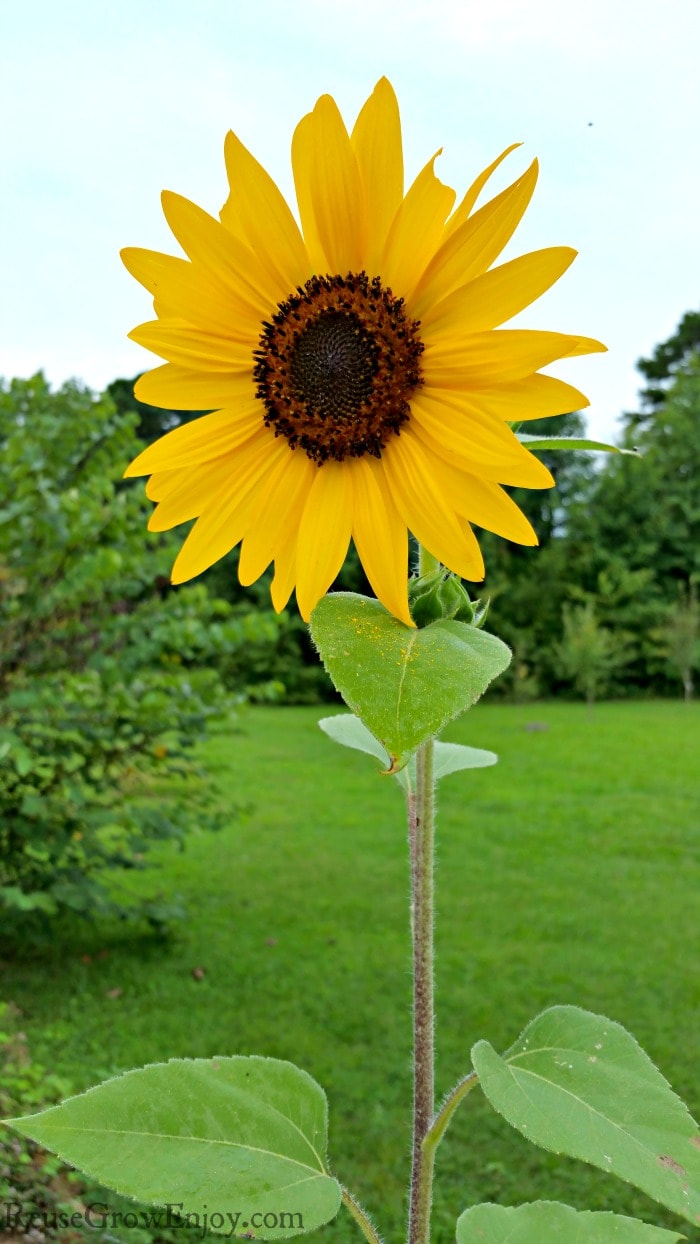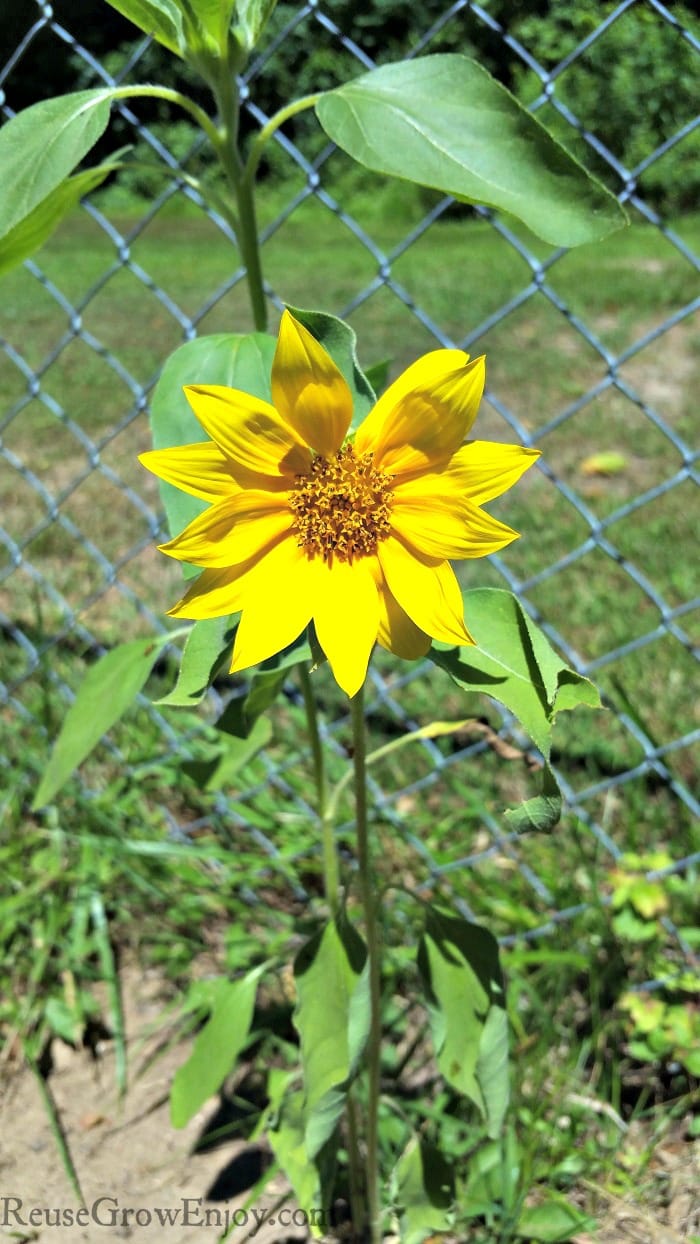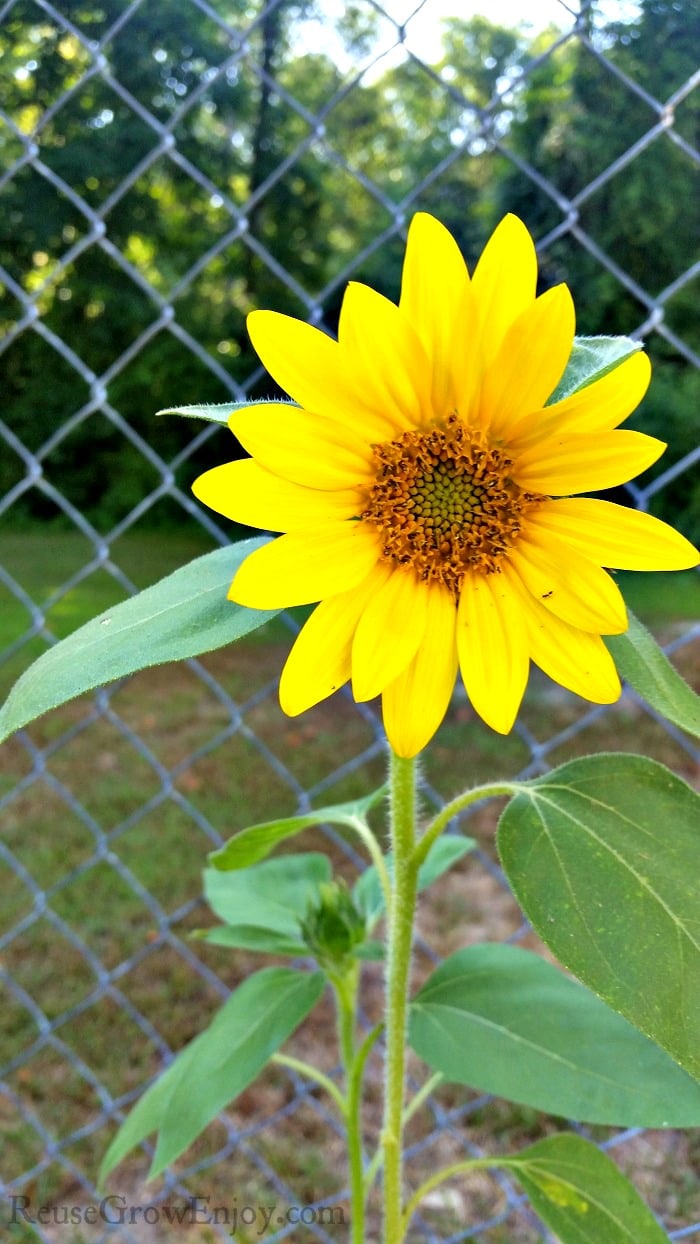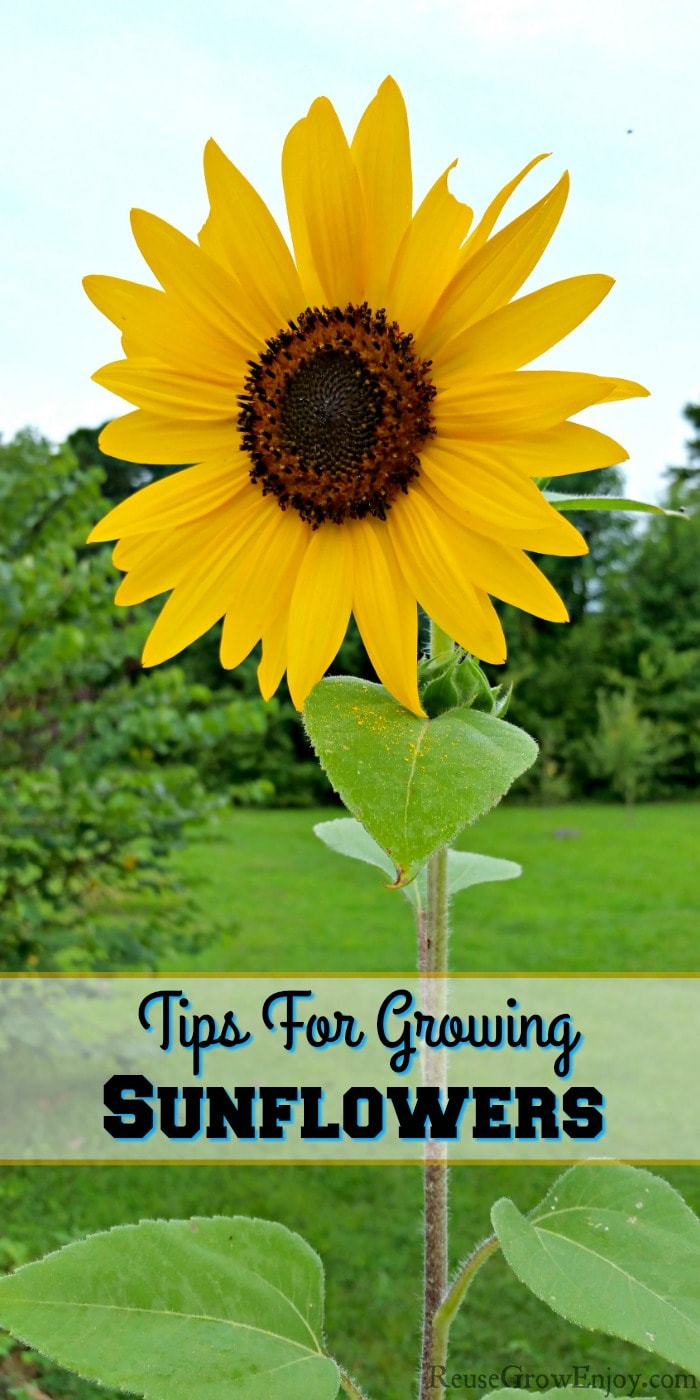Whether you are growing sunflowers for their beauty or to harvest the seeds, knowing a few tips can help. I am going to share a few tips to make growing sunflowers a little easier.

Tips For Growing Sunflowers
Summer is not complete without the sight of sunflower or two. Did you know that growing sunflowers is not as hard as you may think? They really are a pretty easy flower to grow when you know these few growing tips.
Sunflower Uses:
Seeds – The one part of the plant that is widely known to be used is the seeds. They make wonderful healthy snack options for people.
They do also make wonderful food for birds too. If you harvest your own, it is a nice way to cut down on your birdseed budget.
Teas – it has been said that you can make a tea from parts of the head of the sunflower and that the Indians used teas like this to treat respiratory issues.
Oils – Oils can be extracted from the seeds to make oils that are widely used in cooking and cosmetics.
And that’s just the top three uses, there are tons of other uses for a sunflower other than for its beauty.
Sunflower Types:
Did you know there is more than one type of sunflower? While they all have a similar sunflower look, they vary slightly in color. They also come in a wide verity of sizes.
The most popular variety of sunflower is the traditional tall, yellow ones we see in pictures and on TV. They are a gorgeous addition to any backyard.
However, you can also find other colors, ranging from bright orange to pale yellow ones or unusual ones like red or maroon.
There are also sunflower varieties that produce single or double blooms while there are others with single or multiple heads. You can also get giant sunflowers that can grow up to 10 feet tall or miniature ones that grow to just under 1 foot.
Some are grown just for the look alone while others are grown to be used for seeds, oils, and other uses.
While there are about 70 different species of sunflowers, here are just a few of the different types. If you are looking to grow any of these, you can find all the seeds here.
Kong Hybrid
This one is a fast growing giant that grows to be about 168 inches tall.
Suntastic Pink Bicolor Hybrid
These have a pollen-free bloom. It is a dwarf plant that grows to be about 20 inches tall. It gets up to 20 blooms per plant.
Mammoth Russian
This is another giant one that grows to be about 144 inches tall. It has large heads that produce a large number of seeds. Use as a snack or to feed to birds.
Sunray Yellow Hybrid
This one is a cute little sunflower plant. It grows to be 20-22 inches tall. It produces up to 14 4″ flowers from the plant.
Sunflower Growing Tips:
Placement:
Sunflowers need at least 6 to 8 hours of direct sunlight on a daily basis. While they can be grown indoors, these flowers grow best when started in the ground in full sun.
Pick a spot where they will live permanently. Sunflower roots are sensitive to being moved, so transplanting them might kill them.
Sunflowers grow best at temperatures between 64 to 91 degrees. You can still plant them at slightly lower temperatures, but be sure to plant them two weeks after the last frost.
Germination:
Before sowing the seeds, folding them in a damp paper towel can increase the planting success rate.
Moisten the paper towel slightly with water, leaving it damp but not dripping. Place the seeds on one half of the paper towel then fold the other half to cover them.
Place the damp paper towel with seeds in a plastic bag, keep them in a warm place, not hot, if you can. Check on them at least once or twice a day until the seeds have sprouted. Once this happens, you can move on planting the seeds.
Soil Prep:
Before planting, make sure that you have well-draining, loose soil, with a pH range of at least 6.0 to 7.5.
Dig the soil to a depth of 8 – 12 inches.
Since sunflowers are heavy feeders, mix the soil with organic matter or fertilizer (cow manure works best).
Don’t forget to remove any garden debris, weeds, and rocks that could hinder their growth and their emerging from the ground.
TLC:
Although sunflowers thrive in hot weather, they require at least 34 inches of water every year for best growth. Some of the water comes from the soil and the rain, but regular watering is important.
Water your sunflowers deeply once a week. Provide at least 1 inch of water or just enough to keep the soil moist to a 6-inch depth.
Protection:
Squirrels and birds are two of the most common critters that show interest in the sunflowers’ seeds.
Deter the critters with barrier devices, row covers, or screens. As the seed heads mature and the flowers droop, cover the flowers with a white polyspun garden fleece (or pantyhose).
Although sunflowers are generally insect-free, you may notice a small sunflower moth laying its eggs in the blossoms. The larvae then develop into what we would call a caterpillar.
They will make a hole near the top of the seed, eat the entire seed, and then come right back out through the same way they entered. If you see silk looking web on the seeds, you’ve likely found your culprit.
Downy mildew, powdery mildew, and rust might also affect your sunflowers. When you spot them, spray the plants with a general garden fungicide.
If you prefer a more DIY fix: in 1 gallon of water add a ½ teaspoon of dish soap (not Dawn), and a tablespoon of baking soda.
Spray on a test area first to make sure the plant isn’t sensitive to the mixture. Don’t spray in direct sunlight, and don’t store the mixture. You can also use this weekly as a preventative.
Sunflower Harvesting Tips:
If you are growing sunflowers for their seeds, knowing a few tips on how to harvest them will be handy.
There are many different ways you can use, these are the easiest.
Dry On Stem
Allow the head to stay on the stem until it starts to wilt. When it is ready to harvest the head will be brown. The petals should also be falling off at this point.
Tie a paper bag around the sunflower head. Use some twine or string to tie it in place. You don’t want to use plastic for this as you do not want it to lock in moister. That would make things start to mold and we don’t want that.
This is to start collecting the seeds as they naturally fall off. It also helps to keep birds from taking off with them. If the bag gets wet, collect the seeds in it and change the bag.
Drying Off Stem
When the backs of the flower heads have turned brown to yellow-brown, it is time to harvest.
Place a paper bag or cheesecloth over the flower and tie in place with string. Cut the flower from the stem leaving about a 6-12 inches of stem attached to the flower.
Hang the flowers up by the stem part in a warm dry area. You want the flower head to be facing down.
Check the bag every few days and collect any seeds that have fallen off. Keep doing this until all the seeds have come of the flower head.
Here are a few other posts you might want to check out.
- Fake Cake Prop – DIY Sunflower Cake
- Upcycle Food Containers As Little Greenhouses
- Ways To Solve Common Seed Starting Problems
- DIY Cement Spoon Garden Markers





CHOLA S. says
I now have a very sunny yard that is calling for beautiful sunflowers to be grown. The tips and advice here are just what I needed to start planning my garden. Thank you!!!
Nancy W. says
Sunflowers improve the soil with their huge roots!
Rita B. says
I want to try growing these beautiful flowers. Thanks for the information on how to do this.
Irene says
Good morning
How long does it take from seed to bloom???
Reuse Grow Enjoy says
Hi Irene, it will depend on the type of sunflower you plant as well as the conditions around it. It can take 50-100 days from seed to bloom for sunflowers.
Anonymous says
Do I need to deadhead the Sunflower, Sunray Yellow Hybrid if I want new flowers all season?
Reuse Grow Enjoy says
No, they do not require deadheading.